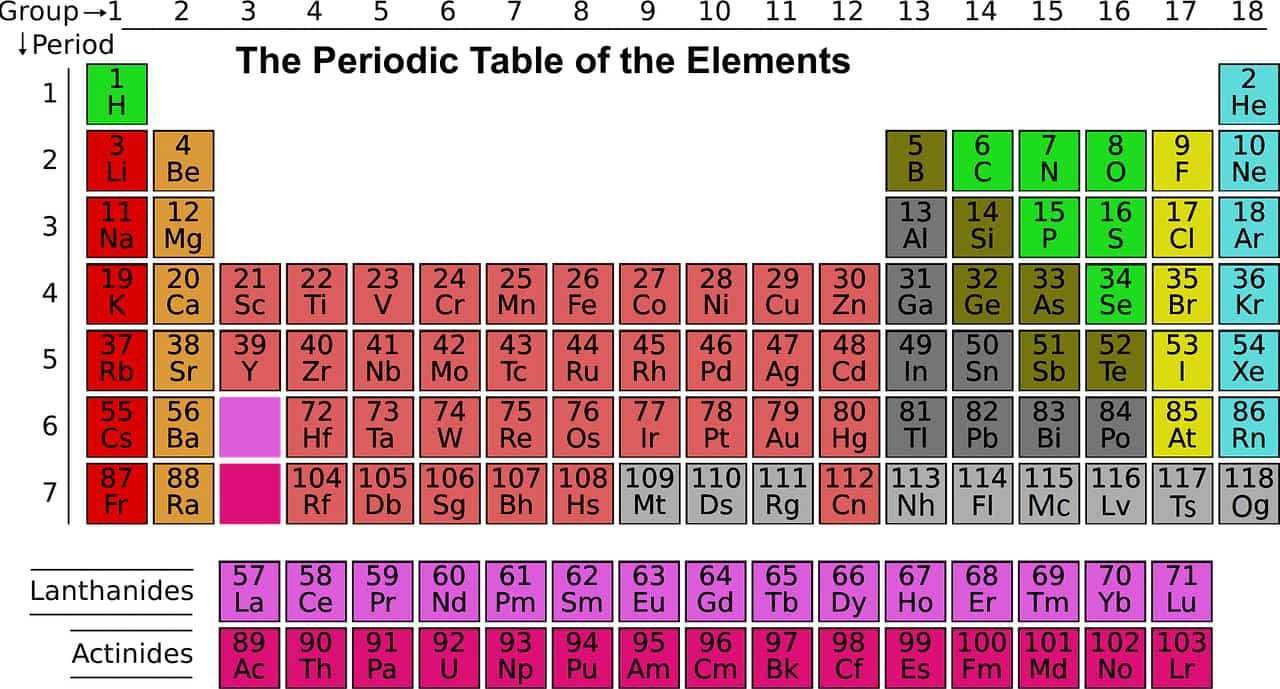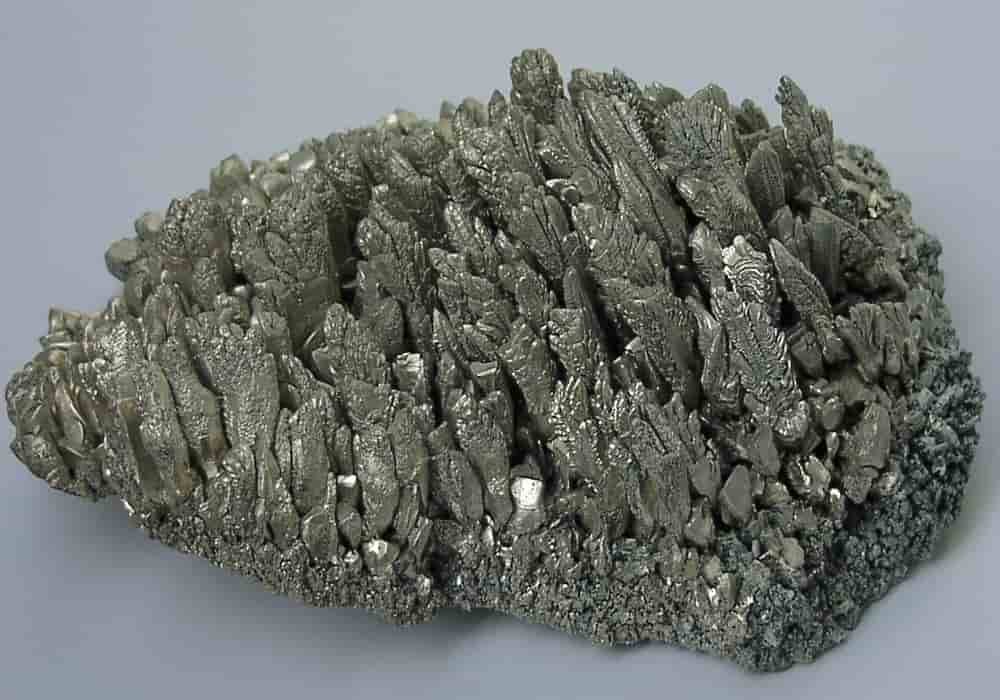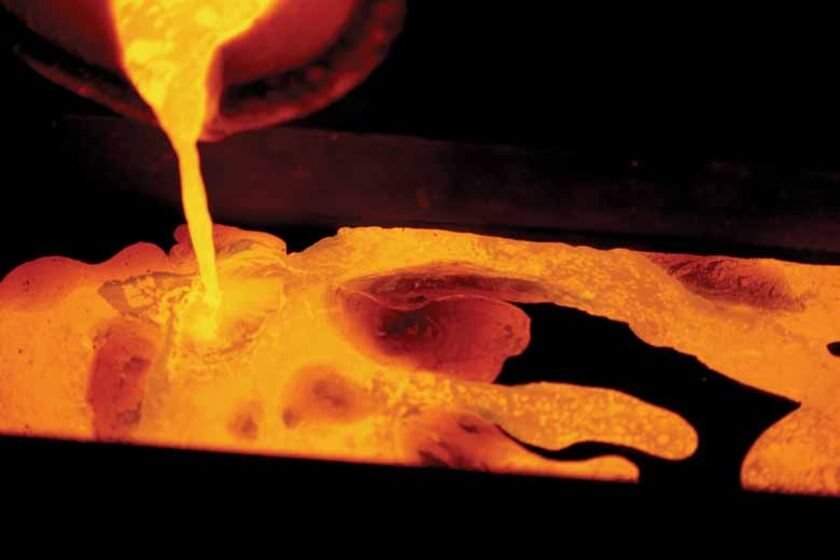Magnesium is the chemical element with atomic number 12, symbol Mg
Magnesium is an alkaline earth metal. It is the ninth most abundant element in the universe. It is the product, in large aging stars, of the sequential addition of three helium nuclei to a carbon nucleus. When such stars explode as supernovas, much of the magnesium is expelled into the interstellar medium where it can recycle into new star systems. Magnesium is the 8th most abundant element in the earth’s crust and the fourth most common element on Earth (after iron, oxygen and silicon), constituting 13% of the planet’s mass and much of the earth’s mass. mantle of the planet. It is the third most abundant element dissolved in seawater, after sodium and chlorine.
Magnesium atoms exist in nature only in the form of combinations with other elements, where it invariably exhibits the +2 oxidation state. The pure element is produced artificially by reduction or electrolysis. It is highly reactive in powder and shavings but, left in the open air, it quickly becomes coated with a thin layer of impervious oxide reducing its reactivity (passivation by oxidation). Pure metal burns readily under certain conditions (producing a characteristic bright, white, dazzling light). In mechanics it is mainly used as a component in aluminum-magnesium alloys (sometimes called magnalium). Magnesium is less dense than aluminum and the alloy is appreciated for its lightness and greater resistance (mechanical and chemical).
What is the health benefits of Magnesium?
Magnesium is a nutrient that the body needs to stay healthy. It is important for many processes in the body, including regulating muscle and nerve function, blood sugar levels, and blood pressure and making protein, bone, and DNA.
Magnesium – Roles, Needs and Food Sources
It is a mineral salt which has a very important role in many intracellular enzymatic reactions. It also participates in the neuromuscular transmission of nerve impulses. It is often considered to be the natural “stress reliever”.
Roles in the body
Magnesium is involved in the activity of more than 300 enzymes and in a number of fundamental cell functions.
It thus participates in the metabolism of lipids (fats), in the synthesis of proteins, in the breakdown of glucose (sugar) to release energy, in the activity of certain hormones, such as insulin.
It is essential for the neuromuscular transmission of nerve impulses and for the regulation of heart rate1.
Recent studies suggest the benefit of an adequate intake of magnesium in the prevention of cardiovascular disease and type 2 diabetes.
Read also: Foods Rich in Magnesium
How does a lack of magnesium manifest in your body?
Since magnesium is little stored in the body, it must be supplied in sufficient and regular quantities through food. The recommended nutritional intakes (ANC) were defined at 6 mg / kg / day, i.e. 360 mg for a 60 kg woman or 420 mg / day for a 70 kg man. Nutritional intakes are higher for pregnant women and athletes.
If the intake is insufficient, magnesium deficiency is characterized by:
- tiredness.
- nervousness.
- irritability.
- tingling at the extremities.
- spontaneous tremors of the lips, cheek or eyelids.
- nocturnal calf cramps.
- or a global, psychic and cardiac hyperexcitability (a heart that beats too fast), which is not limited to the muscles.
Should we measure the magnesium?
98% of the body’s magnesium is found inside cells and only about 1% is found in the blood. The dosage of blood magnesium (magnesium) therefore poorly reflects our magnesium stock. It is essentially the clinical signs that alert to a deficit.
In which cases to take a food supplement?
A supplemental source of magnesium can be helpful in stressful situations, as it accelerates the loss of the mineral through the urine, especially as a high magnesium deficiency amplifies the stress response. Fatigue is another indication of a lack of magnesium.
It is also useful to supplement when taking certain drugs which promote the urinary elimination of magnesium or decrease its intestinal absorption: this is the case of diuretics, estrogen-progestogens (hormonal contraception or hormonal treatment of menopause), or even proton pump inhibitors (taken to lower the acidity of the stomach).
What form of magnesium to choose?
Tablets, oral solution or ampoules, regardless of the presentation, it is the type of salt bound to magnesium that is decisive for its absorption by the cells, and therefore its action and tolerance. Thus, salts of natural origin, of which marine magnesium is part, are more or less well assimilated by the body and, above all, generally induce more diarrhea than synthetic salts. These are more expensive but often better assimilated by our body and some are very well tolerated: citrate, glycerophosphate and forms complexed with amino acids.
What precautions?
Magnesium is taken at least 2 hours away from large doses of calcium (which interfere with digestive absorption) and certain medications (thyroid hormones or certain antibiotics whose absorption may be reduced).
There is no risk of overdose except in cases of renal failure: supplementation then requires medical advice to adjust the dosage.
Recommended Intakes
Intake recommendations for magnesium and other nutrients are provided in the Dietary Reference Intakes (DRIs) developed by the Food and Nutrition Board (FNB) at the Institute of Medicine of the National Academies (formerly National Academy of Sciences). DRI is the general term for a set of reference values used to plan and assess nutrient intakes of healthy people. These values, which vary by age and sex, include:
- Recommended Dietary Allowance (RDA): Average daily level of intake sufficient to meet the nutrient requirements of nearly all (97%–98%) healthy individuals; often used to plan nutritionally adequate diets for individuals.
- Adequate Intake (AI): Intake at this level is assumed to ensure nutritional adequacy; established when evidence is insufficient to develop an RDA.
- Estimated Average Requirement (EAR): Average daily level of intake estimated to meet the requirements of 50% of healthy individuals; usually used to assess the nutrient intakes of groups of people and to plan nutritionally adequate diets for them; can also be used to assess the nutrient intakes of individuals.
- Tolerable Upper Intake Level (UL): Maximum daily intake unlikely to cause adverse health effects.
Table 1 lists the current RDAs for magnesium. For infants from birth to 12 months, the FNB established an AI for magnesium that is equivalent to the mean intake of magnesium in healthy, breastfed infants, with added solid foods for ages 7–12 months.
| Age | Male | Female | Pregnancy | Lactation |
|---|---|---|---|---|
| Birth to 6 months | 30 mg* | 30 mg* | ||
| 7–12 months | 75 mg* | 75 mg* | ||
| 1–3 years | 80 mg | 80 mg | ||
| 4–8 years | 130 mg | 130 mg | ||
| 9–13 years | 240 mg | 240 mg | ||
| 14–18 years | 410 mg | 360 mg | 400 mg | 360 mg |
| 19–30 years | 400 mg | 310 mg | 350 mg | 310 mg |
| 31–50 years | 420 mg | 320 mg | 360 mg | 320 mg |
| 51+ years | 420 mg | 320 mg |
*Adequate Intake (AI)
Reas also: Recommendations Magnesium Intake by life stage and gender
Magnesium in the periodic table
| Atomic number (Z) | 12 |
|---|---|
| Group | group 2 (alkaline earth metals) |
| Period | period 3 |
| Block | s-block |
| Electron configuration | [Ne] 3s2 |
| Electrons per shell | 2, 8, 2 |
Physical properties
| Physical properties | |
|---|---|
| Phase at STP | solid |
| Melting point | 923 K (650 °C, 1202 °F) |
| Boiling point | 1363 K (1091 °C, 1994 °F) |
| Density (near r.t.) | 1.738 g/cm3 |
| when liquid (at m.p.) | 1.584 g/cm3 |
| Heat of fusion | 8.48 kJ/mol |
| Heat of vaporization | 128 kJ/mol |
| Molar heat capacity | 24.869 J/(mol·K) |
Vapor pressure
| P (Pa) | 1 | 10 | 100 | 1 k | 10 k | 100 k |
|---|---|---|---|---|---|---|
| at T (K) | 701 | 773 | 861 | 971 | 1132 | 1361 |
Atomic properties
| Atomic properties | |
|---|---|
| Oxidation states | +1, +2 (a strongly basic oxide) |
| Electronegativity | Pauling scale: 1.31 |
| Ionization energies |
|
| Atomic radius | empirical: 160 pm |
| Covalent radius | 141±7 pm |
| Van der Waals radius | 173 pm |
Other properties
| Other properties | |
|---|---|
| Natural occurrence | primordial |
| Crystal structure | hexagonal close-packed (hcp) |
| Speed of sound thin rod | 4940 m/s (at r.t.) (annealed) |
| Thermal expansion | 24.8 µm/(m·K) (at 25 °C) |
| Thermal conductivity | 156 W/(m·K) |
| Electrical resistivity | 43.9 nΩ·m (at 20 °C) |
| Magnetic ordering | paramagnetic |
| Magnetic susceptibility | +13.1·10−6 cm3/mol (298 K) |
| Young’s modulus | 45 GPa |
| Shear modulus | 17 GPa |
| Bulk modulus | 35.4 GPa |
| Poisson ratio | 0.290 |
| Mohs hardness | 1–2.5 |
| Brinell hardness | 44–260 MPa |
| CAS Number | 7439-95-4 |
History
| History | |
|---|---|
| Naming | after Magnesia, Greece |
| Discovery | Joseph Black (1755) |
| First isolation | Humphry Davy (1808) |
Main isotopes of magnesium
| Main isotopes of magnesium | |||||||||||||||||||||
|---|---|---|---|---|---|---|---|---|---|---|---|---|---|---|---|---|---|---|---|---|---|
| |||||||||||||||||||||
Periodic Table of Elements | Complete List of Chemical Elements by Group, Name, Symbol, Color and Type

Sources: PinterPandai, Royal Society of Chemistry, National Institutes of Health,
Photo credit: Wikimedia Commons
Photo explanations: A chunk of vapor-deposited magnesium crystals produced by the Pidgeon process at a refinery in China. Its maximum dimension is about 24 cm long.


